The Taipei Fine Arts Museum (TFAM, 台北市立美術館) is currently holding a retrospective exhibition of work by Chinese artist Xu Bing (徐冰), featuring 22 works, mostly large-scale installations, from 1975 to the present.
Xu often creates illusions, effectively drawing in the viewer for a closer examination of his work. Background Story: Misty Rivers and Layered Ridges (背後的故事:?江疊嶂圖), for example, at first appears to be an ink wash landscape painting based on a work by 17th-century Chinese artist Dong Qichang (董其昌). On closer inspection, however, it is a make-believe assemblage of hemp fibers, dry plants, tree branches and crumpled paper. Like much of Xu’s work, what looks authentic may turn out to be something completely the opposite.
ENCODING/DECODING
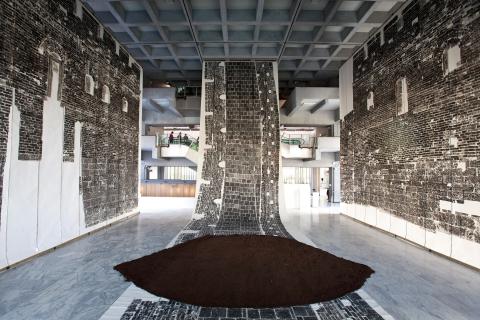
Photo courtesy of TFAM
The exhibition also presents a chronological presentation of Xu’s woodcuts, drawings and sketches from the 1970 and 1980s, followed by some of his more well-known works, such as Book from the Sky (天書), An Introduction to New English Calligraphy (新英文輸入法入門) and Book from the Ground (地書).
Xu seems obsessed with Chinese characters, both real and invented. Book from the Sky, for example, is a text containing 4,000 characters that the artist created. The work erases any possible knowledge gap by making everyone illiterate in front of the book.
With An Introduction to New English Calligraphy, Xu designed a new way to write Roman alphabet — using a calligraphy brush and in the form of Chinese characters — thereby encoding messages within a sign system he invented.
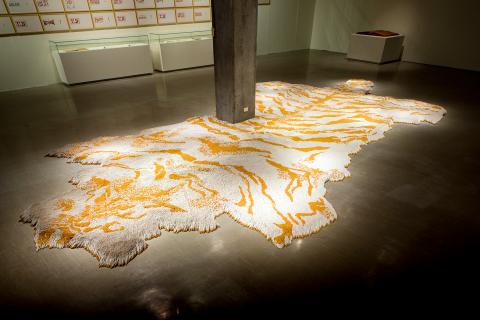
Photo courtesy of TFAM
With Book from the Ground he replaces words, whether real or invented, with icons in a narrative format that can be “read” by the viewer, as though a story without words.
In the system of encoding and decoding, Xu keeps challenging existing rules of the game by providing a working alternative. His provocative works lead the viewer to look at language and art in new and refreshing ways.
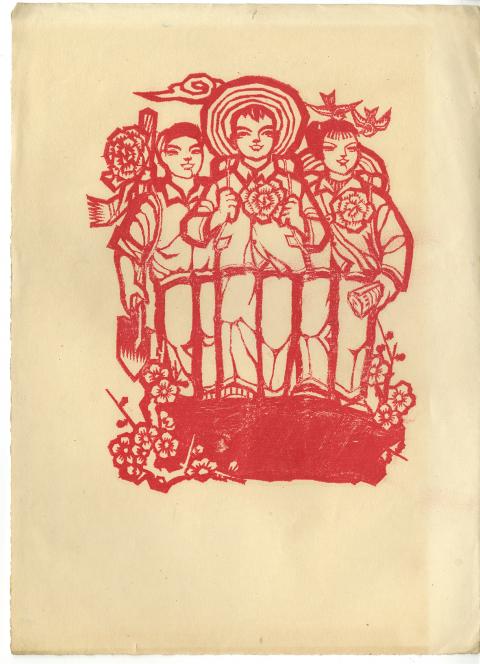
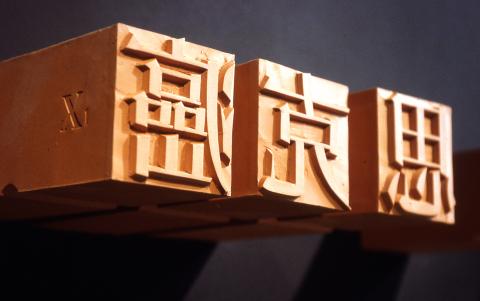
Photo courtesy of TFAM
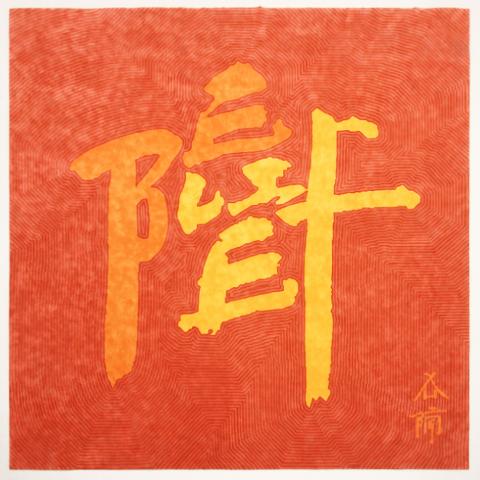
Photo courtesy of TFAM

Every now and then, it’s nice to just point somewhere on a map and head out with no plan. In Taiwan, where convenience reigns, food options are plentiful and people are generally friendly and helpful, this type of trip is that much easier to pull off. One day last November, a spur-of-the-moment day hike in the hills of Chiayi County turned into a surprisingly memorable experience that impressed on me once again how fortunate we all are to call this island home. The scenery I walked through that day — a mix of forest and farms reaching up into the clouds

With one week left until election day, the drama is high in the race for the Chinese Nationalist Party (KMT) chair. The race is still potentially wide open between the three frontrunners. The most accurate poll is done by Apollo Survey & Research Co (艾普羅民調公司), which was conducted a week and a half ago with two-thirds of the respondents party members, who are the only ones eligible to vote. For details on the candidates, check the Oct. 4 edition of this column, “A look at the KMT chair candidates” on page 12. The popular frontrunner was 56-year-old Cheng Li-wun (鄭麗文)

“How China Threatens to Force Taiwan Into a Total Blackout” screamed a Wall Street Journal (WSJ) headline last week, yet another of the endless clickbait examples of the energy threat via blockade that doesn’t exist. Since the headline is recycled, I will recycle the rebuttal: once industrial power demand collapses (there’s a blockade so trade is gone, remember?) “a handful of shops and factories could run for months on coal and renewables, as Ko Yun-ling (柯昀伶) and Chao Chia-wei (趙家緯) pointed out in a piece at Taiwan Insight earlier this year.” Sadly, the existence of these facts will not stop the

Oct. 13 to Oct. 19 When ordered to resign from her teaching position in June 1928 due to her husband’s anti-colonial activities, Lin Shih-hao (林氏好) refused to back down. The next day, she still showed up at Tainan Second Preschool, where she was warned that she would be fired if she didn’t comply. Lin continued to ignore the orders and was eventually let go without severance — even losing her pay for that month. Rather than despairing, she found a non-government job and even joined her husband Lu Ping-ting’s (盧丙丁) non-violent resistance and labor rights movements. When the government’s 1931 crackdown